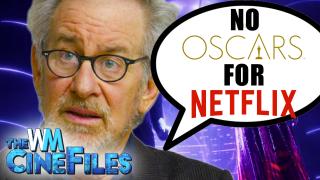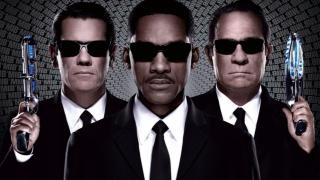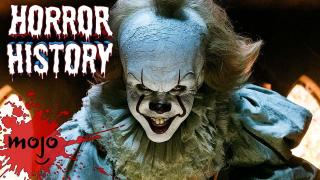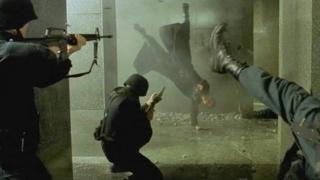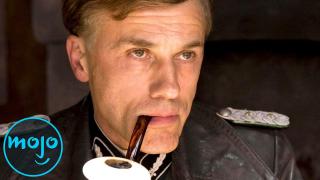Top 10 Unofficial Movie Trilogies
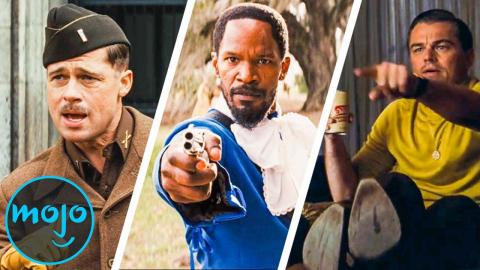
#10: Steven Spielberg's Alien Encounters Trilogy
Steven Spielberg Says NETFLIX Doesn’t Deserve Oscars – The CineFiles Ep. 65
“Close Encounters of the Third Kind” (1977), “E.T. the Extra-Terrestrial” (1982) & “War of the Worlds” (2005) Steven Spielberg is a Hollywood legend with a flair for the fantastical. So if you’re in the mood for sci-fi and want an excuse to watch several of his movies back-to-back, the “Alien Encounters” trilogy is the perfect watch. In all three films there’s a thematic throughline featuring differing reactions to the discovery of extraterrestrial life. “Close Encounters of the Third Kind” features aliens arriving on earth and the two parties developing a mutual obsession. “E.T.” shows the emotional connection that can exist between species. And “War of the Worlds” is exactly as it sounds. If the day ever comes that society does meet alien life, we hope it isn’t anything like the last one.
#9: Jim Carrey's Weird Reality Trilogy
Another Top 10 Movie Trilogies
“The Truman Show” (1998), “Bruce Almighty” (2003) & “Eternal Sunshine of the Spotless Mind” (2004) While Jim Carrey kicked off his career with wackier roles, audiences can track his transition into more serious works with the “Weird Reality” trilogy. Each film features a character whose world takes a turn for the bizarre, though they all manage to remain relatively grounded. First, we start with “The Truman Show,” where Carrey’s character finds out his life has been a lie, televised by an omniscient and producorial god. Then, Carrey discovers what it’s like to be God with the more comedically straightforward “Bruce Almighty.” Lastly, we move on to the more surreal, as “Eternal Sunshine of the Spotless Mind” takes us to depressing yet emotionally cathartic places in memory, showing us the true wealth of this man’s acting abilities.
#8: Lars von Trier’s Depression Trilogy
“Antichrist” (2009), “Melancholia” (2011) & “Nymphomaniac” (2013) Lars von Trier is a controversial director whose work addresses a slew of sensitive yet important issues. Never one to shy away from the unpleasant, from 2009 to 2013, he created three films - well, four if you count “Nymphomaniac’s” two volumes - which some have said reflects the creator’s own experiences with depression. Also including “Antichrist” and “Melancholia,” these films deal primarily with female characters who suffer from the condition and cope with it in some… let’s say destructive ways. All three films can be rather disturbing but intellectually arresting at the same time. We don’t blame you if you don’t want to experience their unapologetic sadness one-after-the-other, but we do recommend them if you’re a fan of Charlotte Gainsbourg, as she stars in each one.
#7: Wes Craven's Horror History Lesson
Horror History: Full Documentary
“The Hills Have Eyes” (1977), “A Nightmare on Elm Street” (1984) & “Scream” (1996) Wes Craven’s influence on the horror genre is undeniable, but it’s easy to forget how much his style changed over the years. If you want to bear witness to that growth first-hand, here’s the unofficial trilogy you should watch. In “The Hills Have Eyes,” we see the director following the typical horror beats of the time while still making the movie feel unpredictable. “A Nightmare on Elm Street” shook up the formula, firmly establishing a new set of rules for future generations of horror fans. And “Scream” is where Craven actively plays off those tropes, satirizing them to create a frightening, subversive masterpiece as we round off an exploration of horror film culture.
#6: The Dunkirk Trilogy
Top 10 Moments from The Matrix Trilogy
“Darkest Hour” (2017), “Dunkirk” (2017), “Their Finest (2017) In 1940, Operation Dynamo resulted in the miracle evacuation of over 338,000 soldiers trapped in the north of France. It was a significant moment during World War II that’s been the subject of multiple films, including three released in 2017! Begin with “Darkest Hour”, starring Gary Oldman as British Prime Minister Winston Churchill, which provides an overview of the political and military events before, during, and after the evacuation. Follow it up with Christopher Nolan's “Dunkirk” for the perspective of desperate soldiers on the ground. And round it out with the British war comedy-drama “Their Finest”, about a British film team adapting the events into a movie to boost morale. It’s a meta way to end a great trilogy!
#5: Quentin Tarantino’s Revisionist History Trilogy
Top 10 Best Quentin Tarantino Villains
“Inglourious Basterds” (2009), “Django Unchained” (2012) & “Once Upon a Time in Hollywood” (2019) Quentin Tarantino has a unique style that permeates his movies, but these films have a different connection beyond witty dialogue. Each of these entries has significant alterations to real-life occurrences, almost as if Tarantino is rectifying certain historical wrongs through film. This common thread, however, means you could watch them in order of release, or their given time period. For example, “Django Unchained” is set in the old west just prior to the American Civil War, “Inglourious Basterds” during World War II, and “Once Upon a Time in Hollywood” in 1969’s Los Angeles. Just don’t go quoting what happens here to any historian.
#4: Oliver Stone’s Vietnam War Trilogy
“Platoon” (1986), “Born on the Fourth of July” (1989) & “Heaven & Earth” (1993) Director Oliver Stone was marked by his experience in the Vietnam War, inspiring the creation of three films that would bring his name into the spotlight. With the first of these being a bit autobiographical, the Oscar-winning “Platoon” is a window into the morality of war through the eyes of a young private. We then see the aftermath of the war for a paralyzed veteran in “Born on the Fourth of July.” And then we switch focus with “Heaven & Earth” by getting the Vietnamese perspective. Though they go about it differently, each film gives us an anti-war message and a poignant illustration of the damage it inflicts on everyone involved.
#3: Park Chan-wook’s Vengeance Trilogy
Top 20 Scientific Inaccuracies in Jurassic Park
“Sympathy for Mr. Vengeance” (2002), “Oldboy” (2003) & “Lady Vengeance” (2005) After making “Joint Security Area,” then the highest-grossing South Korean film, director Park Chan-wook was free to create whatever he wanted. And what he wanted to create were three movies that featured violent revenge plots! While the first film in the trilogy, “Sympathy for Mr. Vengeance,” wasn’t received too well initially, “Oldboy” became a cult hit and is often regarded as one of the best the 21st century has to offer so far. “Lady Vengeance” then rounded out this set of films, which critics appropriately dubbed “The Vengeance Trilogy.” It’s a fantastic combination that poetically questions when violence is justified and how people change when faced with it.
#2: Sergio Leone’s Dollars Trilogy
“A Fistful of Dollars” (1964), “For a Few Dollars More” (1965) & “The Good, the Bad and the Ugly” (1966) This is one film trilogy that a lot people understandably think is interconnected, but actually isn’t. To elaborate, Clint Eastwood became widely known for his contributions to the Spaghetti Western supposedly playing the “Man with No Name” in “A Fistful of Dollars,” “For a Few Dollars More,” and “The Good, the Bad and the Ugly.” But it’s easy to forget that Eastwood actually plays different, albeit very similar characters throughout, as do several other actors. That said, we can understand American distributor United Artists wanting to bundle these films as a trilogy, because we probably would’ve been doing so anyway. In any case, they are essential viewing if you want a comprehensive understanding of the genre.
#1: Edgar Wright’s Three Flavours Cornetto Trilogy
“Shaun of the Dead” (2004), “Hot Fuzz” (2007) & “The World’s End” (2013) This trilogy references three films directed by Edgar Wright, which feature many of the same actors, jokes, but most importantly, a particular frozen dessert. During the after party for “Shaun of the Dead,” Wright and co-writer Simon Pegg were given free ice cream for including Cornetto in the film. Naturally, they replicated the bit in “Hot Fuzz” to get more. They didn’t, but what they did get was a visual motif by which to connect the films. And so with the advent of “The World’s End,” the Three Flavours Cornetto trilogy became complete. Beyond this hilarious sight gag, though, it should be mentioned that the films also share themes of maturity, so you’re likely to get an intellectual meal more satiating than the actual treat.

